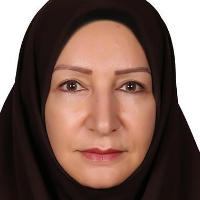Extraction, identification and comparison of essential oils of flowers, leaves, stems and flowering shoots of Achillea vermicularis Trin.
Author(s):
Abstract:
Achillea vermicularis Trin., belonging to Astraceae family, is distributed at North and North-West Iran. It is used for treatment of arthritis infusion of the leaves, gastritis, asthma, and diseases of the liver in traditional medicine. In this study, for the first time, the seeds of A. vermicularis was collected from West Azarbayjan and cultivated in the field of Alborz research station, Karaj, Iran. In order to comparing the essential oil content and composition, flowering shoots and individual plant parts (flowers, leaves and stems) were collected in full flowering stage. The plant materials were dried at shade and their essential oils were obtained by hydro-distillation. The oils were analyzed by gas chromatography (GC) and gas chromatography/mass spectrometry (GC/Mass). The highest oil yields (w/w of dry weight) were obtained from flowers (0.53%) and leaves (0.52%) and the lowest oil yield was obtained from stems (0.24%). The oil yield of total aerial parts was 0.43%. According to these results, the distillation of all aerial parts is more suitable in comparison with oil extraction from the flowers that is common for other Achillea species, resulting in wasting a lot of essential oils in the leaves and stems. Twenty-nine compounds were identified in the essential oils, of which 1,8-cineol, camphor and piperitone were found in all essential oils in significant quantities. The content of camphor varied from 4.1% in stem oil to 19.2% in flower oil. Minimum and maximum content of 1,8-cineol was found in the stem oil (3.3%) and flower oil (23.3%), respectively. The minimum content of piperitone (4.9%) was obtained in stem oil and aerial parts oil was rich in piperitone (26.4%). There were special differences among the essential oils of plant parts. The presence of special compounds such as heptadecane (31.1%) and hexadecanol (18.6%) and n-henei cosine (4.5%) and n-octadecane only in stem oil (3.1%), germacrene D in aerial parts oil (13.6%), were other differences.
Keywords:
Achillea vermicularis Trin , essential oils , 1 , 8 , cineol , piperitone , camphor
Language:
Persian
Published:
Iranian Journal of Medical and Aromatic Plants, Volume:31 Issue: 5, 2016
Pages:
743 to 752
magiran.com/p1485713
دانلود و مطالعه متن این مقاله با یکی از روشهای زیر امکان پذیر است:
اشتراک شخصی
با عضویت و پرداخت آنلاین حق اشتراک یکساله به مبلغ 1,390,000ريال میتوانید 70 عنوان مطلب دانلود کنید!
اشتراک سازمانی
به کتابخانه دانشگاه یا محل کار خود پیشنهاد کنید تا اشتراک سازمانی این پایگاه را برای دسترسی نامحدود همه کاربران به متن مطالب تهیه نمایند!
توجه!
- حق عضویت دریافتی صرف حمایت از نشریات عضو و نگهداری، تکمیل و توسعه مگیران میشود.
- پرداخت حق اشتراک و دانلود مقالات اجازه بازنشر آن در سایر رسانههای چاپی و دیجیتال را به کاربر نمیدهد.
In order to view content subscription is required
Personal subscription
Subscribe magiran.com for 70 € euros via PayPal and download 70 articles during a year.
Organization subscription
Please contact us to subscribe your university or library for unlimited access!


